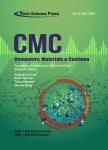Android Malware Detection Using ResNet-50 Stacking
作者机构:Department of Computer ScienceUmm Al Qura UniversityP.O.Box 715MeccaSaudi Arabia Curriculums and Teaching DepartmentFaculty of EducationUmm Al Qura UniversityP.O.Box 715MeccaSaudi Arabia School of Computer ScienceUniversity College DublinBelfieldDublinIreland
出 版 物:《Computers, Materials & Continua》 (计算机、材料和连续体(英文))
年 卷 期:2023年第74卷第2期
页 面:3997-4014页
核心收录:
学科分类:08[工学] 0837[工学-安全科学与工程] 0812[工学-计算机科学与技术(可授工学、理学学位)] 081202[工学-计算机软件与理论]
主 题:Androidmalware convolutional neural network malware analysis malware classification image classification support vector machine
摘 要:There has been an increase in attacks on mobile devices,such as smartphones and tablets,due to their growing popularity.Mobile malware is one of the most dangerous threats,causing both security breaches and financial losses.Mobile malware is likely to continue to evolve and proliferate to carry out a variety of cybercrimes on mobile devices.Mobile malware specifically targets Android operating system as it has grown in popularity.The rapid proliferation of Android malware apps poses a significant security risk to users,making static and manual analysis of malicious files difficult.Therefore,efficient identification and classification of Androidmalicious files is crucial.Several ConvolutionalNeuralNetwork(CNN)basedmethods have been proposed in this regard;however,there is still room for performance improvement.In this work,we propose a transfer learning and stacking approach to efficiently detect the Android malware files by utilizing two wellknown machine learning models,ResNet-50 and Support Vector Machine(SVM).The proposed model is trained on the DREBIN dataset by transforming malicious APK files into grayscale images.Our model yields higher performance measures than state-of-the-art works on the DREBIN dataset,where the reported measures are accuracy,recall,precision,and F1 measures of 97.8%,95.8%,95.7%,and 95.7%,respectively.



